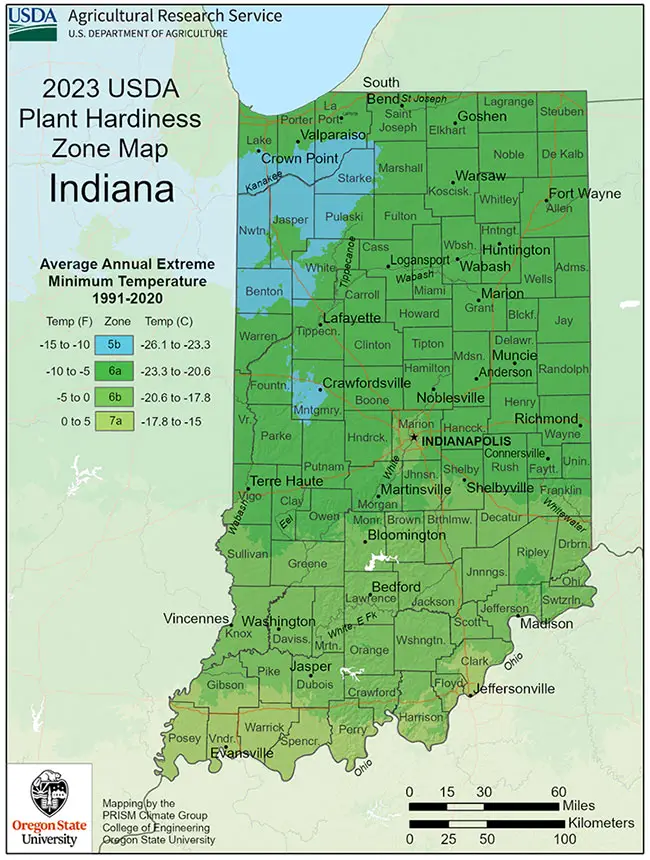
Indiana’s climate isn’t favorable to palm tree cultivation. The state experiences a humid continental climate, characterized by chilly winters and warm summers. In January, temperatures typically range from 17°F (–8°C) to 35°F (2°C), while July sees averages ranging from 63°F (17°C) to 88°F (31°C).
The USDA hardiness zones in Indiana span from 5b to 6b. Extreme temperature records for the state include a scorching high of 116°F (47°C) and a bone-chilling low of –36°F (–38°C).
Precipitation patterns bring occasional droughts and abundant rainfall, along with an annual snowfall averaging about 22 inches (56 cm).
Growing Palm Trees in Indiana
Given these climatic conditions, attempting to grow palm trees in Indiana can be challenging. If you’re determined to have a palm tree in your yard, you’ll need to create a microclimate resembling the milder conditions found in zone 7b.
While the Needle Palm is exceptionally cold-hardy and can withstand temperatures as low as -10°F, it still requires protection from the cold. Here are cold hardiest palm trees:
- Needle Palm Tree – Zones 5b-11 (-15 to -10F)
- European Fan Palm Tree – Zones 7b-11 (5 to 10 F)
- Pindo Palm Tree – Zones 7b-11 (5 to 10 F)
- Sago Palm Tree – Zones 7b-11 (5 to 10 F)
- Saw Palmetto Palm Tree – Zones 7a-11 (0 to 5 F)
- Windmill Palm Tree – Zones 7b-11 (5 to 10 F)
More Palm Trees»
Major Cities in Indiana
Evansville – Hardiness Zone 6b
Fort Wayne – Hardiness Zone 5b
Gary – Hardiness Zone 5b
Hammond – Hardiness Zone 5b
Indianapolis – Hardiness Zone 5b
Lafayette – Hardiness Zone 5b
South Bend – Hardiness Zone 5b
Terre Haute – Hardiness Zone 5b

I’ve seen banana palm trees growing in new castle Indiana. What’s the hardiness zone for new castle?